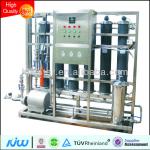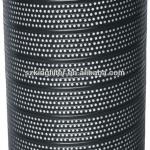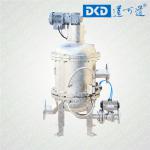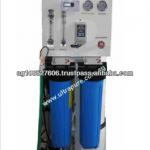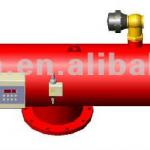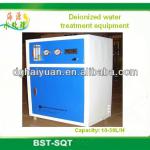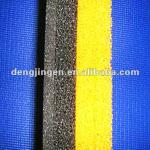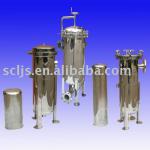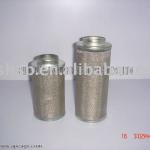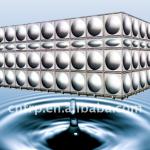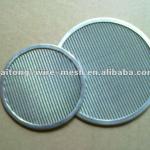10000LPH Mineral water purification machine / water treatment Machine / PET bottle water purification system/water purifier
| Condition:New | Type:RO | Medium Material:UF | Place of Origin:Guangdong China (Mainland) |
| Brand Name:Pukuicun | Model Number:RO-1000I(10000LPH) | Voltage:110V/220/380 | certification:ISO9001 |
| classification:water purifier | Clean:automatic rinse | Capacity:1000LPH~100000LPH | Material:304 Stainless steel/ FRP |
| Purified water:Drinking water, mineral water, pure water |
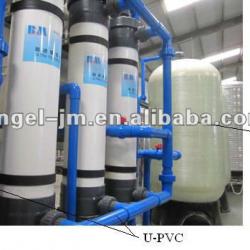
Mineral water treatment plant for drinking/potable water. Our plant could make drinking water, mineral water and pure water from the water sources: Undergound, spring, well, river, borehold,and etc.
Capactiy: 1000LPH to 100,000LPH
Sand filter and carbon has FRP and SS optonal.
Pipeline could be complete stainless steel design.
Please contact. We will provide proposal to you immediately.
1.The UF water treatment plant process
Raw water---Raw water tank --- Raw water booster pump --- Mechanical filter (Quartz sand filter) --- Activated carbon filter --- Precise filter --- High-pressure pump --- UF module--- Pure water tank
2. The main struction of the plant
Quartz sand filter & Activated carbon filter
Pre-treatment is important when working with RO and nanofiltration (NF) membranes due to the nature of their spiral wound design. The material is engineered in such a fashion to allow only one way flow through the system. As such the spiral wound design doesn't allow for backpulsing with water or air agitation to scour its surface and remove solids. Since accumulated material cannot be removed from the membrane surface systems they are highly susceptible to fouling (loss of production capacity). Therefore, pretreatment is a necessity for any RO or NF system. Pretreatment in SWRO system has four major components:
- Screening of solids: Solids within the water must be removed and the water treated to prevent fouling of the membranes by fine particle or biological growth, and reduce the risk of damage to high-pressure pump components.
- Cartridge filtration - Generally string-wound polypropylene filters that remove between 1 - 5 micrometre sized particles.
- Dosing of oxidizing biocides such as chlorine to kill bacteria followed by bisulfite dosing to deactivate the chlorine which can destroy a thin-film composite membrane. There are also biofouling inhibitors which do not kill bacteria but simply prevent them from growing slime on the membrane surface.
- Prefiltration pH adjustment: If the pH, hardness and the alkalinity in the feedwater result in a scaling tendency when they are concentrated in the reject stream, acid is dosed to maintain carbonates in their soulble carbonic acid form.
- Carbonic acid cannot combine with calcium to form calcium carbonate scale. Calcium Carbonate Scaling tendency is estimated using the Langelier Saturation Index. Adding too much sulfuric acid to control carbonate scales may result in calcium sulfate, barium sulfate or strontium sulfate scale formation on the RO membrane.
High pressure pump
The pump supplies the pressure needed to push water through the membrane, even as the membrane rejects the passage of salt through it. Typical pressures for range from 225 to 375 psi . In the case of seawater, they range from 800 to 1,180 psi .
Membrane assembly
The membrane assembly consists of a pressure vessel with a membrane that allows feedwater to be pressed against it. The membrane must be strong enough to withstand whatever pressure is applied against it. RO membranes are made in a variety of configurations, with the two most common configurations being spiral-wound and a hollow-fiber.
Disinfection
Post-treatment consists of stabilizing the water and preparing for distribution. Desalination processes are very effective barriers to pathogenic organisms, however disinfection is used to ensure a "safe" water supply. Disinfection (sometimes called germicidal or bactericidal) is employed to kill any bacteria protozoa and virus that have bypassed the desalination process into the product water. Disinfection may be by means of , using UV lamps directly on the product, or by chlorination or chloramination (chlorine and ammonia). In many countries either chlorination or chloramination is used to provide a "residual" disinfection agent in the water supply system to protect against infection of the water supply by contamination entering the system.

| Packaging Detail:wooden case |
| Delivery Detail:within 20-90 days after deposit |



